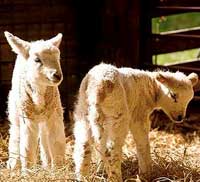CT scanning improves genetic potential

Lambs produced from sires that have been selected by CT scanning could yield up to £1.50 a lamb more according to recent findings.
Research by the Scottish Agricultural College concluded CT scanning elite rams had resulted in significant returns and led to higher EBV accuracies of EBV traits, which allowed substantial improvements in genetic response.
Speaking at the British Society of Animal Science Conference in Nottingham, SAC’s Kirsty Moore explained that when farmers CT scanned there was an improvement in genetic response.
“However for this increased genetic improvement to be maintained across years, keepers need to CT scan animals annually. New mobile scanners make this easier.”
Although Dr Moore appreciated the added costs associated with CT scanning, as well as the fact it was more time-consuming and the equipment less portable, she still advised doing it for the top 15% elite rams.
She recommended incorporating CT scanning as part of a two-stage process, with elite males identified based on ultrasound scans, before being CT scanned. “Past research has found this two-stage process to be economical and increase genetic progress by up to 32% compared to using ultrasound scans alone.”
Based on data, Dr Moore roughly costed that for a flock of 450 ewes producing 1.6 lambs (720 lambs) sired by elite rams that had been CT scanned, the extra lean weight a lamb would be 0.37kg. Over the total number of lambs this would result in an extra 266kg of muscle and assuming a price of 400p/kg DW this would equate to an extra £1,080 over the flock or £1.50 a lamb from selecting CT scanned rams.
